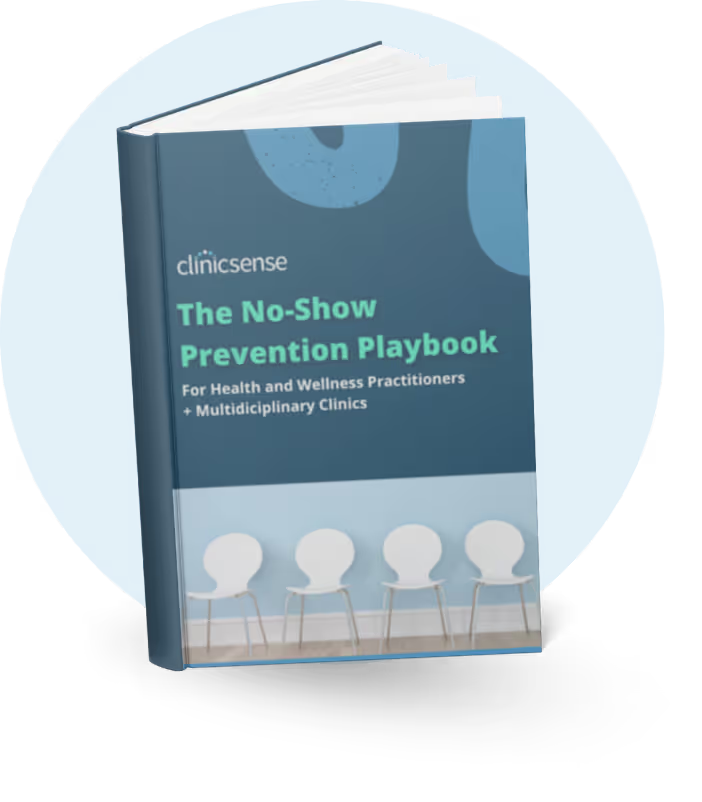Physical Therapy Business Tips
October 12, 2024

Starting a physiotherapy practice on your own comes with many challenges, with one of the largest being funding. From loans to awards, trying to understand the financial aspects of your practice can be confusing and frustrating.
The biggest questions on your mind right now might be how does physiotherapy funding work, and how can any practice owner thrive in today’s competitive market?
Don’t worry, because right here, right now, we’re going to cover physiotherapy funding options, common challenges, and practical solutions for physical therapy practice owners at any stage of their business.
There are many different physiotherapy funding options for practice owners to be aware of when starting or expanding their practice, including getting help from friends and family, taking out bank loans, winning over angel investors, bringing in venture capitalists, crowdsourcing, and (of course) self-funding.
While the funding methods you choose for your clinic will be unique to you, it’s important to understand some of the most common and effective choices ahead of time. Let’s explore each of these in more detail.
Although we may not like to admit it, most of the people we know with successful businesses (including physiotherapy practices) were started with gifts or zero-interest loans from family or friends. That’s because while bank loans often come with heavy interest and prohibitive borrowing limits, one good gift or loan from a loved one can be life-changing.
Most people reading this will probably think “okay, but that doesn’t apply to me”. If that’s the case for you, consider doing a quick pass through all of your loved ones and think deeply about who might be able to offer a gift or loan (small or big). After all, 5 family members each offering a $5,000 gift or zero-interest loan could be all that you need to get over a major hurdle.
Although not as physiotherapy grants or help from family, bank loans are another common physiotherapy funding option when starting or expanding a practice. Depending on your borrowing history and income, a loan may be an effective and relatively safe method of funding for you.
When considering bank loans, make sure to shop around and look for loan options with the lowest interest possible, ideally from a bank that you’re familiar with. Most bank loans are guaranteed by your own income, so make sure toonly borrow what you need and resist the temptation to overborrow.

An angel investor is someone who looks for lucrative investment opportunities and offers up seed money in exchange for a portion of company ownership. This means that if you’re willing to give up a percentage of your revenue down the line, you can stand up your business with no personal costs.
The catch here is that angel investors are exceedingly rare and usually only go for big payoff opportunities, such as investing in the next Uber or Tesla. However, it’s still worth looking through your contact list to see if you know anyone who might be interested in a portion of your company from day one.
Similar to angel investors, venture capitalists identify and invest in companies with seed money in exchange for a portion of the company’s revenue. However, the difference is that venture capitalists use funding from a large investment firm, rather than their own money.
Although still a longshot for most businesses, venture capitalists are going to be easier to find than angel investors and may take a genuine interest in your physical therapy practice, especially if you have unique selling points that project lucrative growth potential down the road.
As traditional opportunities for new businesses to gain traction become more coveted, new methods such as crowdsourcing are becoming more common for physiotherapy funding. In a nutshell, crowdsourcing means pooling money together from a large group of donors, often in exchange for products or services down the line, and through a crowdsourcing service like GoFundMe.
For example, it might make sense to start a crowdsourcing page asking for $150+ donations from donors and then share it with everyone in your network, offering an optional free physiotherapy evaluation for all donors within the first year of your practice opening. This also opens up your clinic to potential new clients and may lead to more revenue opportunities.
Easily the least appealing option on this list, self-funding is - in part or in whole - the most realistic and accessible physiotherapy funding option for most physical therapy practice owners to start or expand their business. But is that even possible in today’s market?
While there’s no easy way to change your financial situation overnight, self-funding your practice might mean waiting a few years to finally open your doors. During that time, leveraging high-earning opportunities (like travel therapy) and following a steep saving plan may get you to your goal quicker than you think.
When securing physiotherapy funding, a number of challenges can bring a practice’s potential into question. For example, a general lack of awareness of the benefits of physiotherapy, its relatively high cost, and access issues may come up during conversations. Additionally, the competitive healthcare industry must be addressed.
These topics can be daunting for any physiotherapy practice owner, so let’s zoom in on each of them to get a better understanding.
If you asked your neighbor to name 3 benefits of physiotherapy, they might not be able to. This speaks to the lack of awareness the general public has about the value of physiotherapy, and by extension the value of your practice. Ultimately, this can impact funding and revenue down the line.
Some of the best ways to boost awareness about your practice is through community events like lunch and learns, targeted marketing campaigns such as email newsletters, and well-designed referral programs with other providers in your area. Being ready to discuss these topics is key during conversations about your physiotherapy funding.
Another unavoidable truth about modern physical therapy is that it’s relatively expensive for most people. While a prescription medication might cost $10 or a new pair of orthotics might cost $50, just one physiotherapy session can cost as much as $200 in some areas. While your patients are definitely getting what they’re paying for, realizing the value of services is a large gap to cross for most people.
When discussing physiotherapy funding, focus on the ways you can cut costs in your business to provide novel savings to your clients (more on this below). Feel free to get creative and don’t leave anything off the table.
Even if your potential clients know the benefits of physiotherapy and can afford it, many still won’t have the time or aren’t able to make the trip to your clinic to receive care. In recent years, accessibility bottlenecks have been one of the largest challenges for physiotherapy practice owners to overcome.
But there are new opportunities for physical therapists who want to provide virtual appointments to their patients unable to travel to the clinic. New technologies like telehealth are providing new and exciting ways to get around accessibility barriers and get patients the care they need more easily, making them great talking points when securing physiotherapy funding for your practice.
One of the biggest challenges for practice owners securing physiotherapy funding is thriving in the competitive healthcare industry and growing year after year. That’s because physiotherapy startups have to compete with other physiotherapy practice startups, physiotherapy apps, health systems, and competing providers such as chiropractors and acupuncturists.
This is where your unique positioning as a practice comes into play. Make sure to outline what value you add for patients, how you’re different from other options, and why you’ll go the distance when preparing for your physiotherapy funding discussions.
.avif)
Funding challenges can be difficult to overcome when opening or expanding your physiotherapy practice. To increase your chances of success, choose your investors carefully, consider joint ventures and partnerships, form strategic alliances with other providers, seek cross-promotion opportunities, and leverage your space wisely.
While not every one of these items will be the key to your success, it’s likely that at least one of them is. Let’s take a closer look.
Not all investors are created equally, and that couldn’t be more true when seeking your physiotherapy funding. To increase your chances of initial and ongoing success, look for investors who are familiar with the healthcare industry - or better - the physiotherapy market.
Even if your investor isn’t a physiotherapy expert, they should align with your personal values and the goals of your businesses. When everyone believes in the same mission, hurdles are much easier to overcome and misunderstandings are less likely to happen.
An increasingly common option for overcoming funding challenges is joint ventures with other business owners. For example, your physiotherapy practice may open alongside a new gym or wellness center that shares opening costs, rent, and marketing expenses.
Joint ventures are particularly helpful for solo practice owners, although depending on the size of the partnering business and space there may be plenty of opportunity to see business growth before branching off to your own location.
Social media and targeted marketing have changed the way that practice owners spend on their businesses, and for good reason. Affiliate partnerships are arrangements where one party (e.g. a social media influencer) promotes your business in exchange for referral incentives. While they used to be considered lucrative, these arrangements are becoming standard for physiotherapy startups to better manage their funding.
Even though affiliate partnerships are especially useful for practice owners who already have a good standing on social media, it’s never too late to start building your following and creating new affiliate partnerships for the future.
Another often overlooked funding solution is strategic alliances with larger clinics or health systems. In this scenario, you agree to see patients from a larger clinic or health system that can’t provide services to its patients due to resource constraints. As a trusted provider in the alliance, you may be required to see client referrals within a certain amount oftime or provide a specific amount of care.
Slightly different from affiliate partnerships, cross-promotion is a more traditional (yet equally effective) way to optimize your funding. With cross-promotion, other healthcare providers are promoting your services to patients in their clinic or recommending you by word of mouth, with or without a direct incentive. In exchange, you’ll be doing the same for them.
Easily the most basic option covered here, space sharing should be at the top of your list for making the most of your physiotherapy funding. Space sharing just means renting portions of your space to other providers in order to save on operating expenses.
For example, you may rent a physiotherapy clinic space with 4 treatment rooms, but only have a maximum of 3 physiotherapists in the space at one time, and no providers on the weekends. Opening up one of those treatment rooms to a massage therapist or chiropractor during the week, and even the entire clinic on the weekends, is a simple yet effective way to cut down your operating expenses without affecting patient care.
Once your practice is funded and ready to start seeing patients, you’ll need exceptional physical therapy software to deliver exceptional care and optimize your earnings. ClinicSense is an all-in-one physical therapy software featuring customized SOAP notes, automated patient outreach, and intuitive billing tools to make your business operations easier than ever.
You can get a physiotherapy clinical notes software free trial right now to kickstart your practice and start growing.


.avif)
.avif)
.avif)









For 14 days